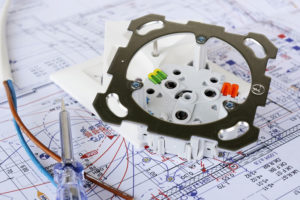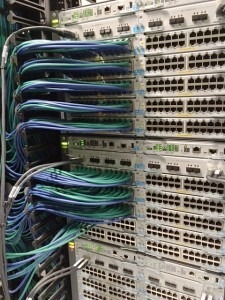In the increasingly data driven world that we live, it is easy to get carried away thinking about the significance of data cabling Watford when planning your office move or upgrade. But with this increased reliance on information technology, it is vital that we don’t overlook more the traditional cabling and electrical installations that are required. Because ultimately, everything needs power.
Planning For Electrical Installations
There are several things that you should keep in mind when planning Electrical Installations for IT, data cabling and power outlets for your project, including:
- Overestimate capacity – The number of plug points that we need has exploded in recent years as we’ve become attached to such a plethora of electronic devices, like mobile phones, laptops, tablets, digital cameras. It is better and easier to plan for multiple access points, rather than having employees annoyed, or using extension leads which can be dangerous.
- Allow flexibility – The way that people work is changing and often people won’t spend their whole day sat at a desk, but instead use meeting rooms or break out areas. Employees will still have a need for power sockets in these areas, so it is important that you anticipate this and put extra sockets where they may be required.
- Consider specialist requirements – Some parts of the electrical installation may have very specialist requirements that are different from the rest of the build. This is particularly application to areas like comms rooms that have a very high density of high powered computing equipment. Consider the power needs for these spaces, but also any additional safety measures that may need to be put in place.
- Think ahead – Electrical Installations for IT – Modern businesses need to be far more flexible and adaptable that they ever where in the past, and this applies to their office space as well. Using methods such as floor box electrical installations with false floors will make it much easier should you need to reconfigure the space in the future.

Back Up Power Installations
Another often overlooked but vitally important area is back up power supplies. For digital businesses that rely on being online to generate revenue, power cuts can be extremely costly. Take proper measures, such installing UPS systems to ensure that you keep your servers running even when the power fails.
Once you reach a certain scale it would also be worth considering installing a generator, which could keep your business operational even during longer power outages.

Safety and Standards
It goes without saying that for all electrical installations for IT, safety is of the utmost importance, and proper guidelines should be followed in terms of both the implementation and the materials used.
There are various standards that much be met to ensure the safety of electrical installations, such as the British Standard “Requirements for Electrical Installations. IET Wiring Regulations” or BS 7671. In accordance with this, all works should completed by properly accredited experts.
Safety considerations should continue well after the initial installation, with regular PAT testing of electrical equipment and periodic reviews of electrical wiring. This is particularly important in high use areas such as offices that will receive a lot of wear and tear.
For more information on guidance on electrical installations you are considering, don’t hesitate to get in touch and speak to one of our expert engineers.
Original Source:- Electrical Installations in the Information Age
